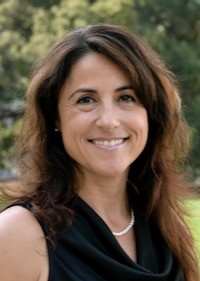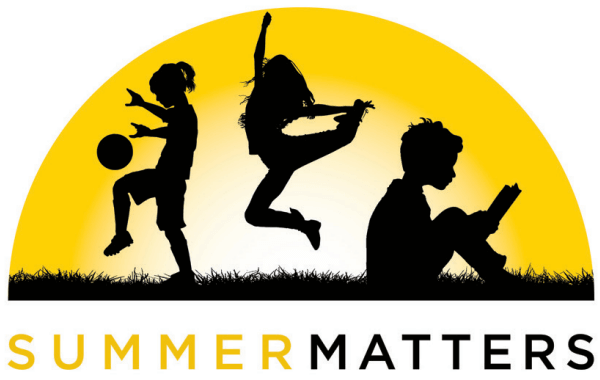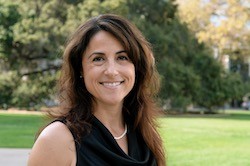Summer Matters More Than Ever

Time to Get Creative
As a person who loves summer just as much now as I did as a kid, I’m struggling with the reality that summer will be something very different this year as we navigate life in the era of COVID-19.
 Guest Comment
Guest CommentJennifer Peck
On top of my personal feelings about the summer and what it will mean for my high school-age daughter, I am guided by seven years immersed in the topic of summer learning while my organization, the Partnership for Children and Youth, was leading the California Summer Matters Campaign.
This campaign set out to raise awareness about summer learning loss and its disproportionate impact on low-income students, and to set a vision for what summer could and should be for all kids.

It also set out to develop, showcase, and replicate models of effective summer learning programs that successfully engaged kids in fun learning opportunities. These were designed as camp-like environments and involved partnerships between school districts and state parks, libraries, and many, many community-based youth development programs working side-by-side with teachers.
Plan Now!
There are some unique challenges in front of us as we think about this coming summer, when learning loss, social disconnection and mental health challenges will be as intense as ever.
Districts need to plan now for different scenarios. Online? In person?
We should be doubling down on supports for kids over the summer, but there are a lot of unknowns. We don’t yet know to what extent we will be allowed to congregate in groups and when. We don’t know what the resource picture will look like. We don’t know how we can staff programs. The barriers seem immense, and feel overwhelming while our system is still trying to implement distance learning at scale.
What we cannot do is become paralyzed. There is too much at stake. Right now, we must be planning for different scenarios so that we can be ready to serve as many students as possible with various combinations of virtual and small group in-person time, including creative, project-based activities for students.
We have heard rumblings of school districts that have already decided that school buildings will be closed all summer long, so we also must be prepared to use alternative facilities for bringing students together as health authorities allow. Cities and community-based organizations should prepare now to play a role.
Personal Relationships: Key to Success
Every single summer program has to lead with social and emotional engagement to have any chance of reaching the many kids who have disengaged from school. Of course mitigating learning loss is critical, but we know from all the brain science of recent years what good teachers have always known: without an emotional connection, learning does not happen.
We have no choice: Relationships must be front and center.
This is a moment when we have no choice but to act on this knowledge and make relationships front and center. We can build on what many schools and districts have already begun in their distance learning plans. For example, in a recent EdSource podcast San Diego Superintendent Cindy Marten talks about how she’s providing guidance to all the adults who interact with kids — teachers, counselors, support staff — to start all interactions with a check-in. How are kids doing? What’s happening in their family? What do they need?
There are a growing number of examples and tools emerging around the state that can be applied to virtual and in-person learning, like Visalia Unified’s Daily Dose of SEL and Sacramento County Office of Education’s Everyday SEL podcast interviews with educators and students about what social-emotional learning means to them and what it looks like in their daily lives.
Work with Community Partners
In times of crisis, we must approach problems and solutions with all hands on deck. California has the largest-in-the-nation network of publicly funded after school programs, many of which also operate summer programs. The staff of these programs, often from the same communities as the kids they serve, are experts at engaging kids and their families and making learning fun.
The Sacramento Chinese Community Service Center, which runs after school programs at numerous schools, is using the same digital platform as teachers to provide programming to kids, including virtual dance club, visual arts, literacy activities and STEAM learning. 4-H has developed 4-H at home, which has guided activities like Virtual Space Camp.
Now more than ever we need organizations like these to help keep kids connected to caring adults, engaged in learning activities, and reinforce the habits and mindsets that will prepare them to return to school, whatever that may look like. This work won’t be finished when class resumes in the fall — these partnerships will be key to providing the additional and ongoing learning supports that so many kids will need in the coming year and beyond.
This is a moment in which we have no choice but to get really creative. Let’s learn not just from amazing teachers and district leaders who are finding creative ways to offer distance learning, but also from community educators like Boys & Girls Clubs, YMCAs private summer camps, and others who are working hard to find ways to support kids through virtual means.
Our Plea to California’s Educational Leaders: |
|
|---|---|
|
1 |
Do everything you can to support as many kids as you can this summer — especially those most vulnerable. |
|
2 |
Lead with relationship-building. |
|
3 |
If permitted by health authorities, find ways to bring groups of kids together with adults. |
|
4 |
Leverage community-based partners to plan and deliver summer programs, and in planning for fall. |
|
5 |
Advocate for federal stimulus funds to be invested in summer learning activities. |
|
6 |
Ask parents what they want and need over the summer to support their children to inform your planning. |
 Jennifer Peck is President & CEO of the Partnership for Children and Youth, a statewide intermediary that strategically links practice and policy to improve educational opportunities for underserved youth in California. Since founding the organization nearly 20 years ago, Jennifer has played a leading role in building California’s system of afterschool and summer programs, which serves nearly a million students every year. Jennifer served as an appointee of President Bill Clinton at the US Department of Education and she is the proud mother of Emilia, a 10th grader who is enormously patient with her mother’s work schedule.
Jennifer Peck is President & CEO of the Partnership for Children and Youth, a statewide intermediary that strategically links practice and policy to improve educational opportunities for underserved youth in California. Since founding the organization nearly 20 years ago, Jennifer has played a leading role in building California’s system of afterschool and summer programs, which serves nearly a million students every year. Jennifer served as an appointee of President Bill Clinton at the US Department of Education and she is the proud mother of Emilia, a 10th grader who is enormously patient with her mother’s work schedule.Tags on this post
Social-emotional learning Summer PandemicAll Tags
A-G requirements Absences Accountability Accreditation Achievement gap Administrators After school Algebra API Arts Assessment At-risk students Attendance Beacon links Bilingual education Bonds Brain Brown Act Budgets Bullying Burbank Business Career Carol Dweck Categorical funds Catholic schools Certification CHAMP Change Character Education Chart Charter schools Civics Class size CMOs Collective bargaining College Common core Community schools Contest Continuous Improvement Cost of education Counselors Creativity Crossword CSBA CTA Dashboard Data Dialogue District boundaries Districts Diversity Drawing DREAM Act Dyslexia EACH Early childhood Economic growth EdPrezi EdSource EdTech Education foundations Effort Election English learners Equity ESSA Ethnic studies Ethnic studies Evaluation rubric Expanded Learning Facilities Fake News Federal Federal policy Funding Gifted Graduation rates Grit Health Help Wanted History Home schools Homeless students Homework Hours of opportunity Humanities Independence Day Indignation Infrastructure Initiatives International Jargon Khan Academy Kindergarten LCAP LCFF Leaderboard Leadership Learning Litigation Lobbyists Local control Local funding Local governance Lottery Magnet schools Map Math Media Mental Health Mindfulness Mindset Myth Myths NAEP National comparisons NCLB Nutrition Pandemic Parcel taxes Parent Engagement Parent Leader Guide Parents peanut butter Pedagogy Pensions personalized Philanthropy PISA Planning Policy Politics population Poverty Preschool Prezi Private schools Prize Project-based learning Prop 13 Prop 98 Property taxes PTA Purpose of education puzzle Quality Race Rating Schools Reading Recruiting teachers Reform Religious education Religious schools Research Retaining teachers Rigor School board School choice School Climate School Closures Science Serrano vs Priest Sex Ed Site Map Sleep Social-emotional learning Song Special ed Spending SPSA Standards Strike STRS Student motivation Student voice Success Suicide Summer Superintendent Suspensions Talent Teacher pay Teacher shortage Teachers Technology Technology in education Template Test scores Tests Time in school Time on task Trump Undocumented Unions Universal education Vaccination Values Vaping Video Volunteering Volunteers Vote Vouchers Winners Year in ReviewSharing is caring!
Password Reset
Search all lesson and blog content here.
Login with Email
We will send your Login Link to your email
address. Click on the link and you will be
logged into Ed100. No more passwords to
remember!















Questions & Comments
To comment or reply, please sign in .
Vivian Chan July 31, 2020 at 2:52 pm